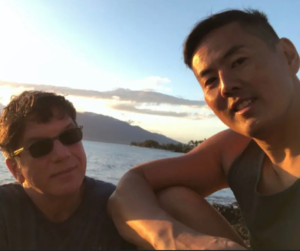Michael Baugh CDBC
Jealousy is a complex cluster of emotions: anger, fear, uncertainty, and insecurity. If you ask a jealous person what they are feeling, they might have a hard time telling you because they aren’t sure themselves. There’s too much to unpack.
So, what about our dogs? Well, they can’t talk at all. Most of us can tell when a dog is angry. We can see fearful behavior. There are even visible signs of uncertainly and insecurity. Is that jealousy? I think the label is a hard fit for dogs. And I’m not a fan of labels in the first place.
 Behavior, in this case dog behavior, is all about verbs. That dog lunged. One dog bit the other. My dog tucked his tail and lowered his head. We observe behavior, identify when it occurs, and then work to change it. Feelings change when behavior changes. We know that for a fact. Is my dog jealous? I don’t know. Regardless, let’s teach him a new pattern of behavior and hope that he feels better.
Behavior, in this case dog behavior, is all about verbs. That dog lunged. One dog bit the other. My dog tucked his tail and lowered his head. We observe behavior, identify when it occurs, and then work to change it. Feelings change when behavior changes. We know that for a fact. Is my dog jealous? I don’t know. Regardless, let’s teach him a new pattern of behavior and hope that he feels better.
Most dog fights start over food or food-relate objects. I’ve seen it in street dogs around the world. My dog has guarded treats and bones. Hundreds of clients’ dogs have clashed this way. It’s commonly called resource guarding.
Resource guarding can spread. A dog might aggress toward a housemate dog over a prized sleeping spot, a crate, or a sofa. One’s dog might guard a caregiver and not let another dog approach. Some dogs become sensitive to another dog approaching their own personal space, no matter where they are.
After two dogs have fought a few times, there is a chance they will become so agitated that they fight on sight. The history becomes thick with anger and pain. They simply don’t like each other.
These cases are hard to resolve, not impossible.
Keep the dogs separate unless in a controlled training exposure. We want to protect them from their own unacceptable behavior. When they fight again, they just get better at fighting. It’s up to us to prevent fights at all costs.
Teach calm behavior. A dog who is physically relaxed (example: lying comfortably on a mat) is less likely to behave aggressively.
Safely expose the dogs to each other at a distance while reinforcing relaxed behavior. Progress incrementally.
This is a very abbreviated description of the process. Work with a qualified trainer to do it correctly and to get support along the way. The process is straightforward, but it is certainly not easy. Get help.
Do I think dogs get jealous? Gosh, that’s a hard one. I really focus on the more basic emotions that are linked to observable behavior. Keep it simple.
If using the word jealousy plays a role, maybe it is this. We humans can all relate to feeling threatened. We may fear that another person is going to take what is ours (money, status, a lover). It’s an unsettling feeling. We may become angry. It’s likely we will feel some enmity toward that person. When we share our feelings with a friend, they may say, “You’re jealous.” It’s possible that defining our dog’s behaviors as jealousy opens the door to empathy. We get it. We’ve felt that terror, that confusion, that rage.
Here we stand on common ground with our dog. “You’re having some big complicated feelings, dog. I’ve had those, too. Let me help you.” If a flimsy label (jealousy) leads to empathy, I’m all for it. Stand tall on that common ground. Step up and help you dog, because you know how awful it feels and how unnecessary that behavior is. Who better than you to help? You understand. You’re smart. And you got this.
Michael Baugh teaches dog training in Arizona and Texas. He specializes in aggressive dog training.




